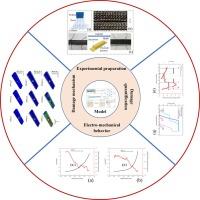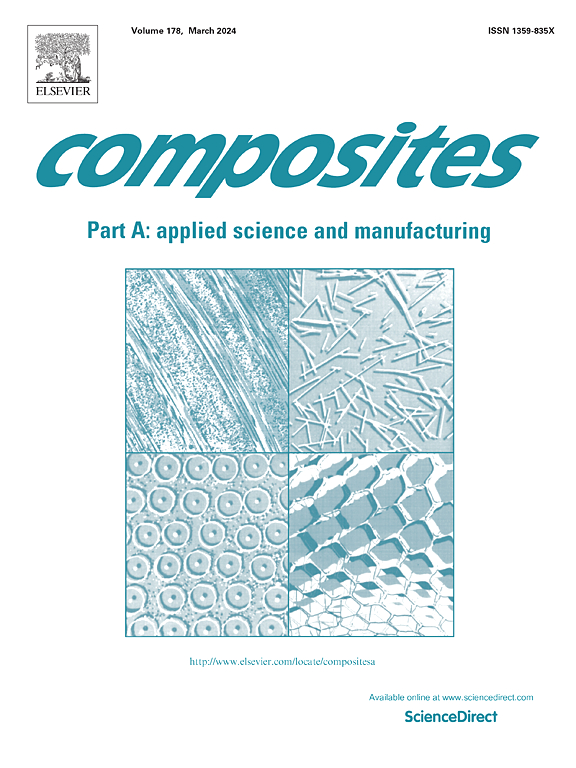Damage detection analysis of 3D braided carbon fiber composites with electro-mechanical behavior
IF 8.1
2区 材料科学
Q1 ENGINEERING, MANUFACTURING
Composites Part A: Applied Science and Manufacturing
Pub Date : 2024-11-14
DOI:10.1016/j.compositesa.2024.108593
引用次数: 0
Abstract
The real-time detection of damage is critical for ensuring the safe application of 3D braided carbon fiber composites (3DBCFC) in both aviation and civilian sectors. In this study, we conducted an electro-mechanical behavior analysis of 3DBCFC using data processing tools to quantify various types of damage. The electro-mechanical behavior data were experimentally measured under tensile conditions. The damage detection capability of different electrical current injection methods was also experimentally validated. A mesoscale finite element model was utilized to investigate the damage mechanism of 3DBCFC under tension. Data processing tools, such as principal component analysis (PCA) and k-means clustering (k-MC), were employed to quantify the different types of damage. The study revealed that oblique current injection provided more comprehensive electrical information, making it more effective for damage detection. The electrical signals obtained through oblique current injection could be processed using data tools to quantify damage in 3DBCFC.

具有电子机械行为的 3D 编织碳纤维复合材料的损伤检测分析
损坏的实时检测对于确保三维编织碳纤维复合材料(3DBCFC)在航空和民用领域的安全应用至关重要。在本研究中,我们使用数据处理工具对 3DBCFC 进行了机电行为分析,以量化各种类型的损坏。机电行为数据是在拉伸条件下进行实验测量的。还通过实验验证了不同电流注入方法的损伤检测能力。利用中尺度有限元模型研究了 3DBCFC 在拉伸条件下的损坏机制。数据处理工具,如主成分分析 (PCA) 和 k-means 聚类 (k-MC) 被用来量化不同类型的损伤。研究结果表明,斜向电流注入能提供更全面的电气信息,因此对损伤检测更有效。通过斜向电流注入获得的电信号可使用数据工具进行处理,以量化 3DBCFC 中的损伤。
本文章由计算机程序翻译,如有差异,请以英文原文为准。
求助全文
约1分钟内获得全文
求助全文
来源期刊

Composites Part A: Applied Science and Manufacturing
工程技术-材料科学:复合
CiteScore
15.20
自引率
5.70%
发文量
492
审稿时长
30 days
期刊介绍:
Composites Part A: Applied Science and Manufacturing is a comprehensive journal that publishes original research papers, review articles, case studies, short communications, and letters covering various aspects of composite materials science and technology. This includes fibrous and particulate reinforcements in polymeric, metallic, and ceramic matrices, as well as 'natural' composites like wood and biological materials. The journal addresses topics such as properties, design, and manufacture of reinforcing fibers and particles, novel architectures and concepts, multifunctional composites, advancements in fabrication and processing, manufacturing science, process modeling, experimental mechanics, microstructural characterization, interfaces, prediction and measurement of mechanical, physical, and chemical behavior, and performance in service. Additionally, articles on economic and commercial aspects, design, and case studies are welcomed. All submissions undergo rigorous peer review to ensure they contribute significantly and innovatively, maintaining high standards for content and presentation. The editorial team aims to expedite the review process for prompt publication.
 求助内容:
求助内容: 应助结果提醒方式:
应助结果提醒方式:


